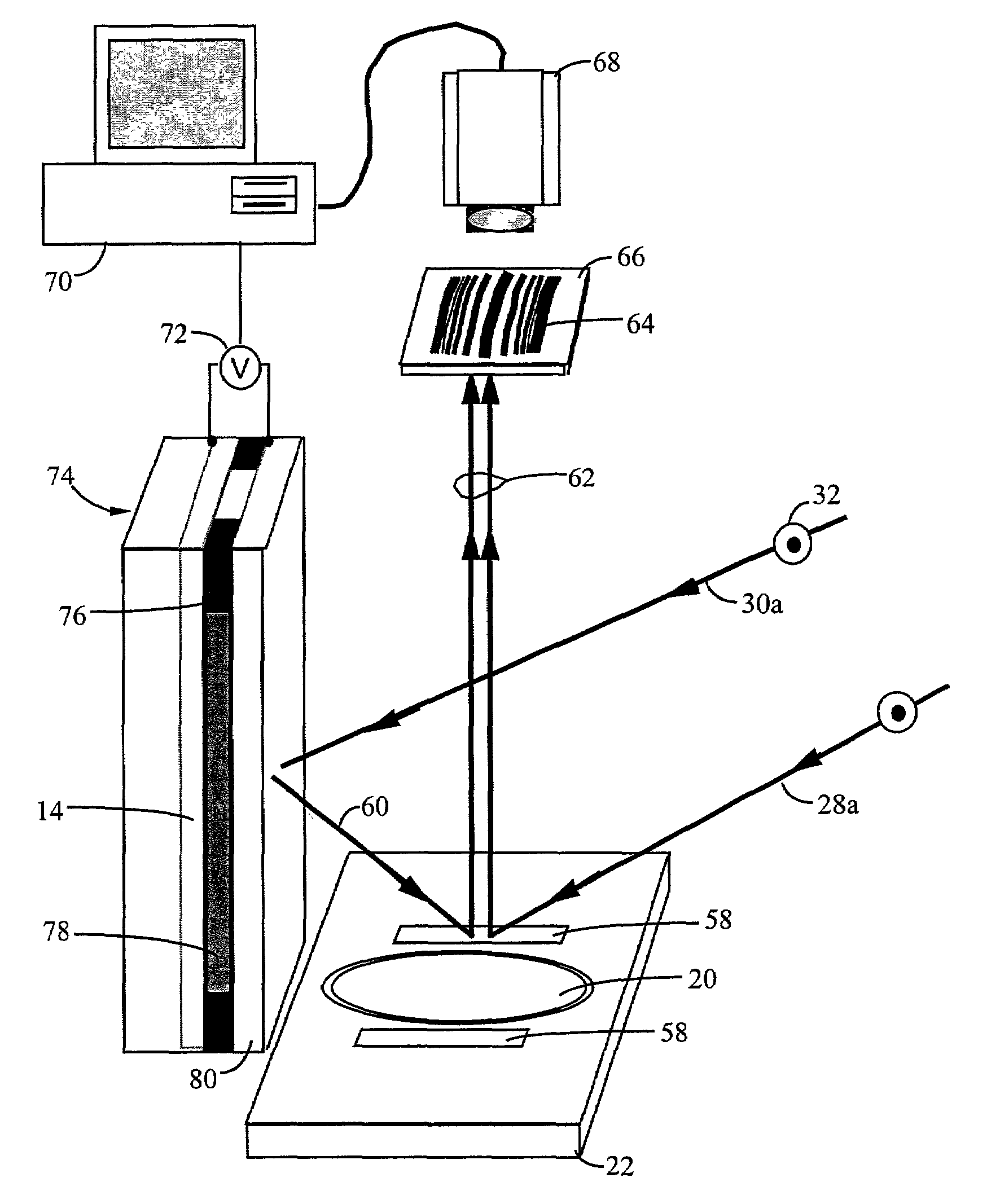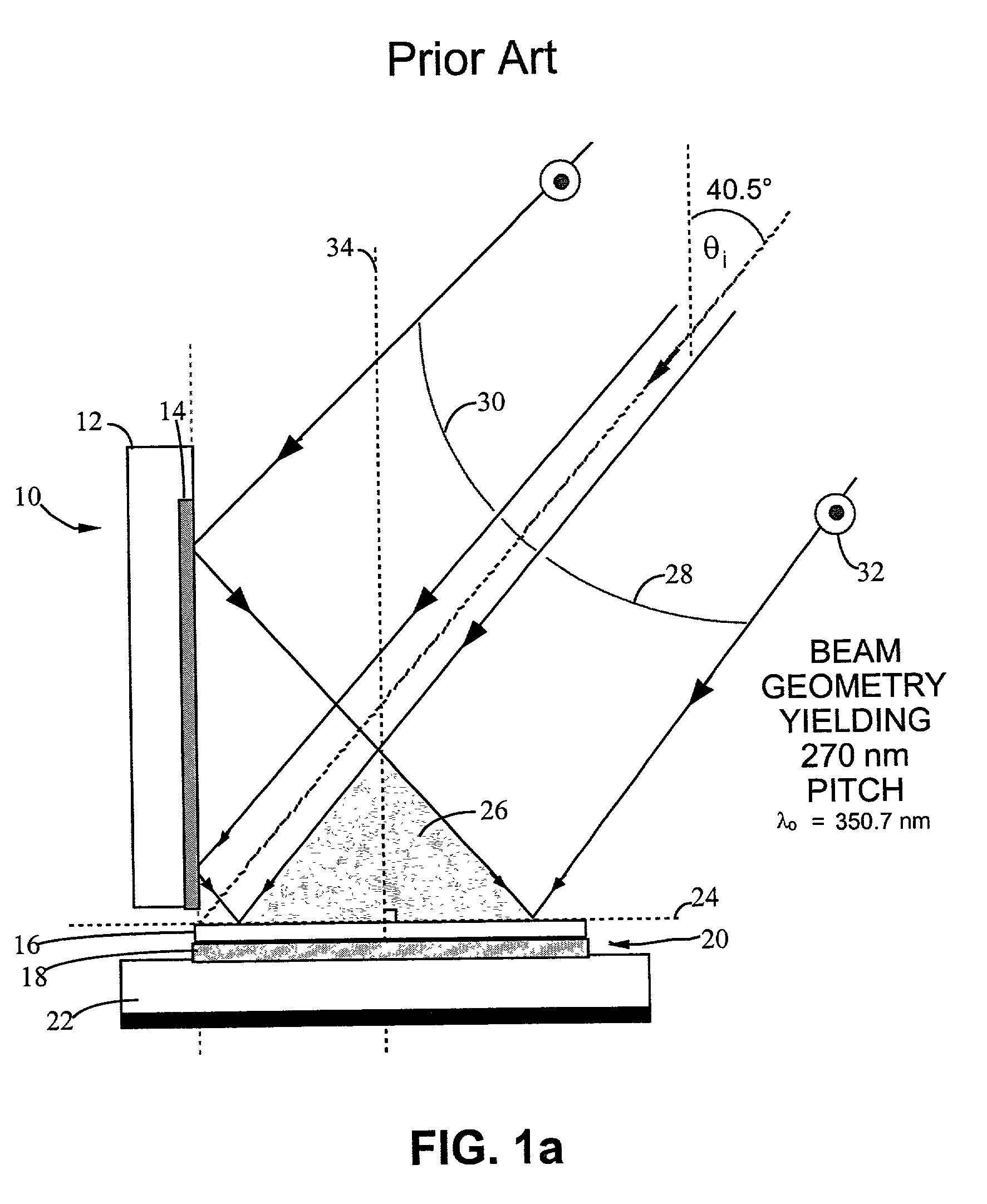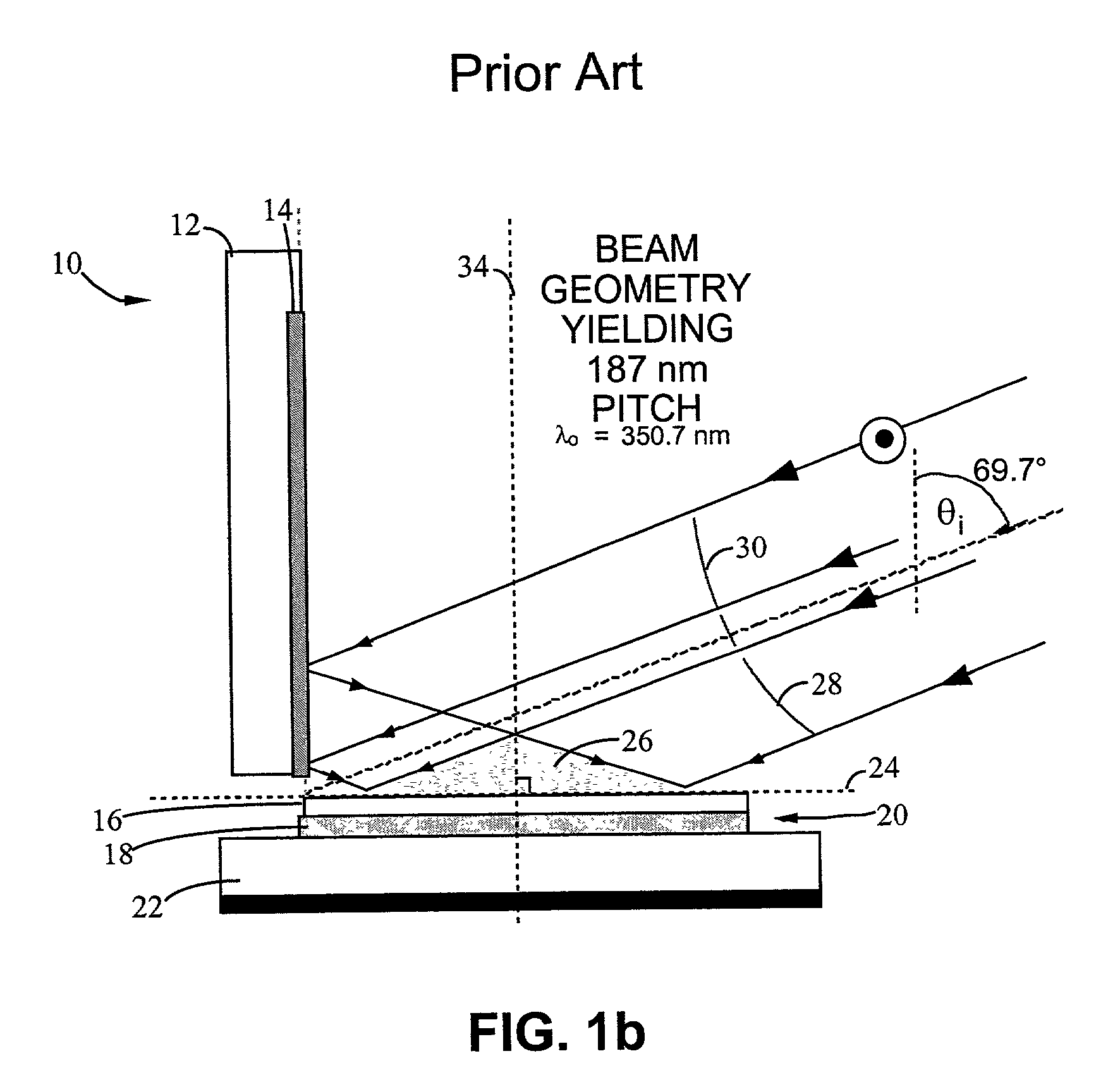Actively stabilized, single input beam, interference lithography system and method
a lithography system and interference technology, applied in the field of interference lithography techniques, can solve the problems of limited practical limitations, insufficiently realized advantages in high-volume manufacturing environments, and use of division-of-wavefront il in applications requiring the fabrication of structures which vary in two dimensions, and achieve active stabilization and enhanced wavefront-division interference lithography configuration.
- Summary
- Abstract
- Description
- Claims
- Application Information
AI Technical Summary
Benefits of technology
Problems solved by technology
Method used
Image
Examples
Embodiment Construction
[0055]As used herein, a workpiece is defined to include a layer of light sensitive material by itself or in combination with other layers of materials, such as a substrate and / or other intervening layers, including planar, non-planar and irregularly shaped objects. For example, the workpiece can be a wafer or a panel. In the exemplary embodiment shown in FIGS. 1a and 1b, workpiece 20 is a wafer comprised of an indium phosphide substrate 18 with a photoresist coating 16 having a thickness in the range of from 1000 to 2000 angstroms(Å). As used herein, the term platform includes any mounting mechanism to which the workpiece can be secured in a desired position and orientation, including but not limited to a wafer stage and vacuum chuck arrangement. Optionally, the position of the platform can be controlled to correctly position the workpiece relative to the interference pattern produced by the optical configuration (e.g., the platform can be rotated and translated to insert and remove...
PUM
 Login to View More
Login to View More Abstract
Description
Claims
Application Information
 Login to View More
Login to View More - R&D
- Intellectual Property
- Life Sciences
- Materials
- Tech Scout
- Unparalleled Data Quality
- Higher Quality Content
- 60% Fewer Hallucinations
Browse by: Latest US Patents, China's latest patents, Technical Efficacy Thesaurus, Application Domain, Technology Topic, Popular Technical Reports.
© 2025 PatSnap. All rights reserved.Legal|Privacy policy|Modern Slavery Act Transparency Statement|Sitemap|About US| Contact US: help@patsnap.com



